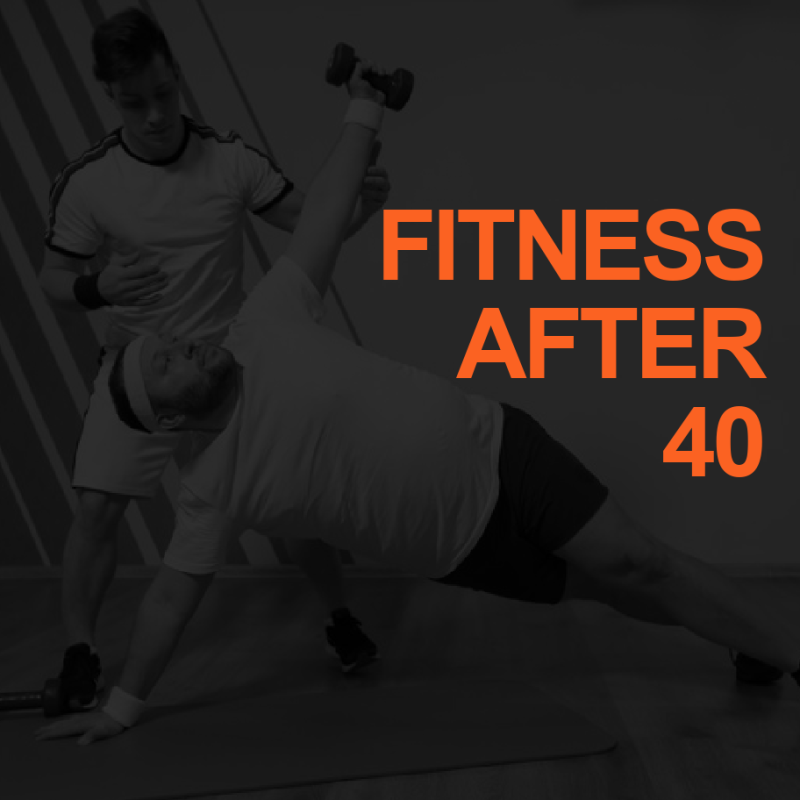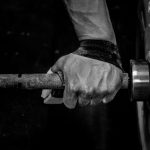
The average age of over half of personal training clients is 45 years old. Over the past 13 years as a personal trainer, I’ve had the pleasure to train a large number of clients including a majority over the age of 40. Through my experience and research, I’ve put together 10 rules for “fitness after 40” that I believe are good guidelines to follow.
1. Always Warm Up
The warm-up is important for everyone but is an absolute must when you are over 40. You can’t just jump under a bar and start benching. The body needs to prepared for the demands of a workout session. Think of the warm-up as pre-heating the oven, you want to gradually increase body temperature and increase blood flow to the muscles which will not only help with muscle soreness but also reduce the chance of injury. Remember, as a personal trainers, “doing no harm” starts with a solid warm-up.
2. Focus on Recovery
The muscles rebuild and repair themselves not by the workout but by the recovery. Your next workout is only as good as your recovery, so in order to make progress and to be consistent in the workouts, focus on recovery. Recovery can mean several different things but I like to incorporate foam rolling, stick mobility, walking, and stretching on non-training days. All of these recovery modalities will help move the process along to enable you to train at an optimal level.
3. Add More Muscular Tension
I’m all for making progress but if for you that means always adding more weight, then it’s best to consider other ways to create greater challenges for your clients. One of the best ways to train as you age is to find ways to increase time under tension on your muscles and the difficulty of exercises. In addition to just adding more repetitions, incorporate different lifting tempos which could include pauses, eccentric focus, slower, and controlled tempos. Changing up the stimulus with bands and other forms of accommodating resistance is also a great way to develop more strength with less joint stress. Also, isometric training is less taxing on the nervous system; it’s amazing what kind of a workout you can get with a towel.
4. Prioritize Single Limb Movements
Most people are asymmetrical and favor one arm or leg over the other. This can cause imbalances over time. By doing single limb exercises you can address and improve imbalances as well as core stability and balance. The stimulus also is great for core training when your train with one limb over bilateral due to the anti-rotation component which makes for a stronger core but also a more resilient body.
5.) More Pulling Than Pushing
For every push exercise do two pulling exercises. This is especially true if you want to help your clients achieve a better posture, increase strength on various lifts, and most importantly, keep their shoulders healthier. Shoulders like pulling and retraction versus pushing. I’ve never met a client with bad shoulders that couldn’t do suspension rows (most say their shoulders feel better after a single set of rows). By working on more pulling, the shoulders will naturally do less rounding which will alleviate less pain in the lower back not to mention having a stronger back will improve the rest of the physique.
6. Develop Power
After the age of 30, we start losing up to 10% of our strength every decade thereafter; even worse we’re losing nearly three times that amount in power. Power is our ability to exert maximum muscular contraction instantly in an explosive burst of movement. In application, it’s our ability to get off the floor quickly without struggling, walk up a flight of stairs nimbly, and allows us to move through our day with relative ease and without discomfort.
7. Ditch Crunches and Rounded-Back Sit-ups
Just because it’s always been done a certain way doesn’t make it the right way. The exercises that we are accustomed to as “core training” have all included movements that flex, bend, or rotate the spine. Research and studies have shown time and time again that the true role of the core is to resist movement, not create it. Instead of doing Russian twists, crunches and side bends, focus on anti-movement exercises such as planks, Pallof presses, and dead bugs (just to name a few). Anti- movement core training will not only spare your clients’ backs but also will help them develop a stronger more functional core.
8. No More Seated Exercises
While we make an effort to reduce our clients’ sedentary lifestyle practices, giving them exercises that are in a seated position is only feeding into more sitting. It’s bad enough that most people sit for long periods of time which has been shown to weaken the muscles in your legs and gluteal muscles. We need these muscles to be able to function properly such as for walking and without them, you are more susceptible to falls or injuries during workouts. Too much sitting is also linked to obesity and other health issues, so get off your clients up and moving.
9. Lower the Intensity
No one is saying you have to drop to the 3-lb dumbbells, but understanding that when you are 40, your body needs a little more time to recover from hard, intense workouts. Too much intensity can lead to overtraining so it’s important to monitor exercise intensity. I always advocate for training consistency over intensity in order to maintain a more frequent stimulus for growth, and ultimately more muscle.
10. Work on Turkish Get-ups
Few people care about mobility until they can’t move. Getting up and down from the floor isn’t much different. It’s often overlooked until it becomes a problem, as you may have discovered with some of your elder clients. It’s important to also note how the skill of getting up from the floor easily is linked to longevity. Fortunately through smart fitness training, getting off the floor doesn’t have to become a constant battle, especially when training with the Turkish Get-Up.
Supporting our greater proportion of aging clientele is paramount in being responsible and successful fitness professionals. Knowing how to appropriately program for fitness after 40 is an asset to every personal trainer.







